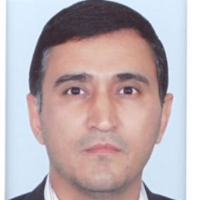Analysis of temporal trend of changes of groundwater quality parameters (Case study: aquifer of Fathabad)
One of the important purposes of flood spreading plans is to feed groundwater tables and increase quality of these resources. One of the most important indicators for evaluation of artificial recharge plans is to examine their impact on quality of groundwater resources. The main aim of current research is to investigate effects of implementation of artificial aquifer recharge plan (Herat flood spreading) on temporal changes of groundwater quality parameters in the region.
Harat watershed area is 1413 square kilometers in south of Yazd province. The location of flood spreading sites implemented at the end of Harat basin outlet and with an area of 490 hectares, which includes four implementation areas. In order to investigate and evaluate the effects of flood spreading projects on groundwater resources, statistics of parameters of 17 wells were used from the area of aquifer of Fathabad affected by these projects, based on available information, parameters of calcium, carbonate, magnesium, sodium, chlorine, and total dissolved solids and salt was extracted. The wells were classified into two groups, control and affected, based on their location relative to sites and the direction of flow in waterways of area. According to length of period, in order to evaluate the impact of water withdrawals and consequently impact of sedimentation on the efficiency of the sites, the entire period was divided into two periods so that 2003-2011 is first period and 2012-2021 is second period. Minitab software was used to check linear trend of average groundwater quality parameters. For this purpose, the average of all types of quality parameters of water resources, first and second periods were entered in software and the change process for each parameter was obtained. In order to investigate temporal trend of groundwater quality parameters, Mann-Kendall test was used at 95% confidence level and Sen's slope by XLSTAT 2019 Software.
The results related to time trend of water quality factors through Mann-Kendall method and Sen's slope showed that calcium factor among nine wells located downstream of the project, three wells have no trend and the rest have a negative trend. The results of checking trend of control wells showed that calcium had a positive trend in all but one well during statistical period under review. Factors of sodium, bicarbonate and magnesium in the downstream of projects often have a negative trend and also in the control area they often show a positive trend, but factors of salinity, chlorine and total dissolved solids in the control area do not have the same situation as other factors. So that the number of wells without trend in the control range is more than the rest of the factors. This means that the condition of the aquifer in terms of three indicators is neutral and does not have a negative or positive tendency, but the investigation of trend related to affected area showed that flood spreading projects have been able to improve the status of these factors, which are part of the important factors affecting agricultural water. lead to improvement. In order to investigate effects of flood spreading projects, at the beginning and after several years, linear trending of the average factors was done in two time periods. Due to lack of data in the last of years of implementation of flood spreading to evaluate effectiveness of groundwater quality from flood spreading project, the number of available years was divided into two almost equal parts so that impact of these projects can be investigate in the initial period and after a few years. The results of linear trend of the first and second periods showed that total dissolved solids and calcium were decreasing with a high slope in the first period, but in second period and after a few years, effectiveness decreased, but it is still decreasing with a gentle slope. Bicarbonate and magnesium factor have had an increasing trend in first period, and in second period, magnesium has decreased towards a negative slope, but bicarbonate follows an increasing trend with a higher slope than in first period. In the case of other factors such as salinity, chlorine, sodium, trends are almost similar to each other. So, in the first period, they have decreased with a slight slope, but in second period, this slope has increased proportionally. This means that the infiltration of flood water through these projects has been able to improve status of all factors except for bicarbonate, but the passage of time has left different effects on the manner and extent of effect, which requires more detailed investigations.
According to results of investigations of time trend of various factors in this region, flood spreading has been able to have a positive effect on quality of groundwater. So that in determining trends of whole aquifer, except for bicarbonate factor, which had a positive trend, in other factors, there was a decreasing trend and no trend, which indicates positive effect of flood spreading on the control of quality factors. The results of this research showed that state of trend of all factors in some wells of witness area showed an increase and, in some wells, there was no trend, but in the affected area (downstream) all factors had a decreasing trend. The location of wells and distance from the waterways and flood spreading sites have a great impact on the vulnerability of wells. So that B9 well, which is located in the farthest part of the affected aquifer and is far from flood spreading sites, is among wells that had the most negative trend in most factors. Also, B3 and B2 wells are among wells that have the highest decreasing slope. Investigations showed that B9 well was located at a very short distance from the main waterway and B2 and B3 wells are also located near the distribution sites in addition to position relative to waterway and are affected by several flood distribution sites. So, distance of wells from waterway and the location of the sites can be very effective.
- حق عضویت دریافتی صرف حمایت از نشریات عضو و نگهداری، تکمیل و توسعه مگیران میشود.
- پرداخت حق اشتراک و دانلود مقالات اجازه بازنشر آن در سایر رسانههای چاپی و دیجیتال را به کاربر نمیدهد.



